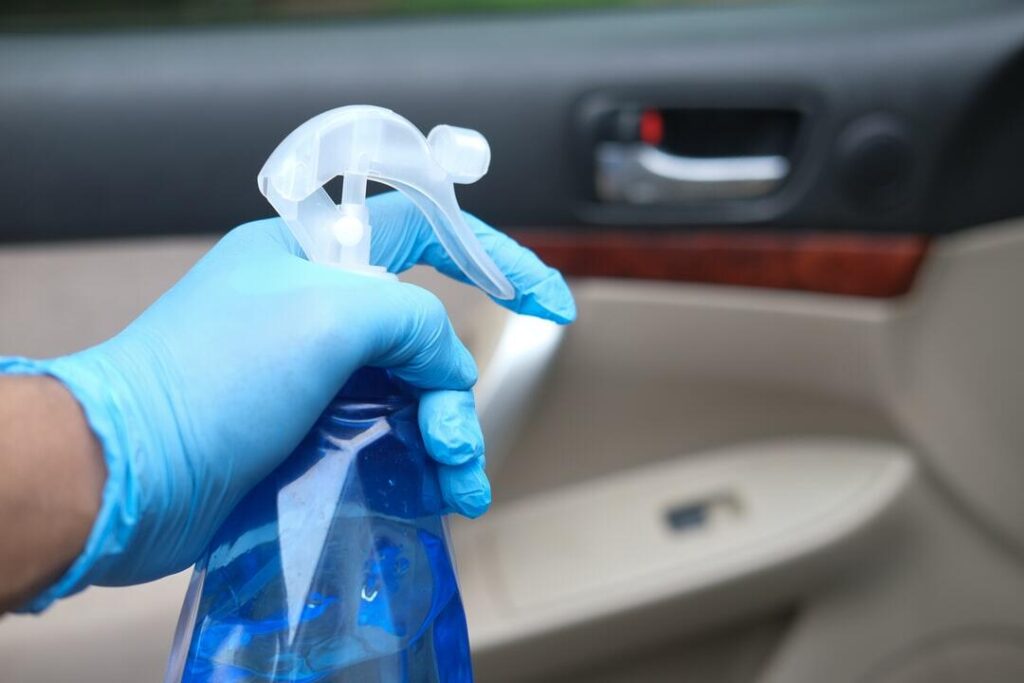Picking the right autobody supplies is super important-whether you’re just starting or have been fixing cars for years. The tools and materials you use can make a big difference in how well the job turns out. In today’s fast-changing world of car repair, knowing what supplies to use isn’t just helpful-it’s a must.
With the right gear, your repairs will be faster, easier, and built to last. Let’s dive in!
Common Autobody Supplies
When it comes to autobody supplies, a variety of materials and tools come into play, underpinning the entire repair process. Here are some essentials you should consider:
Paints
Automotive paints do more than make a car look good-they also protect it from weather, rust, and wear. Good-quality paint adds an extra layer of defense that keeps the car’s surface in better shape over time. Choosing the right paint can help your repair job last longer and look more professional.
Primers
Primers are the first layer applied before painting and are key to a smooth, even finish. They help the paint stick better and create a solid base that resists rust and moisture. Without primer, paint is more likely to peel or wear off quickly.
Fillers
Fillers are used to fix small dents, scratches, or low spots in the vehicle’s body. They create a level surface so the final paint coat looks clean and even. When applied and sanded properly, fillers can make damaged areas nearly invisible.
Tools
Having the right tools makes any autobody job faster and easier. Items like sanders, spray guns, and brushes help you apply materials more evenly and with better control. Quality tools also lead to better-looking, longer-lasting results.
The Importance of Quality Automotive Paint
Using good-quality automotive paint can be the difference between a repair that lasts and one that doesn’t. Higher-end paints often have stronger pigments and resins, which help the color stay bright and the surface stay protected for longer. In fact, some research shows that better paint can make a car’s exterior last much longer.
These paints not only cover better, but they also stand up to sunlight and tough weather. Since paint helps both the look and protection of a car, picking the right kind is one of the most important steps in a successful repair. Understanding the options available can help tailor your autobody supplies selection to your specific needs:
Basecoat/Clearcoat Systems
This system uses two layers: a basecoat for color and a clearcoat for protection and shine. The clearcoat helps protect the paint from scratches, UV rays, and weather damage. Together, they create a deep, glossy finish that lasts longer and looks more professional.
Single-Stage Paints
Single-stage paints combine color and gloss in one coat, making the process faster and simpler. These are often used for solid colors and are popular in basic repairs or older car restorations. While they’re easier to apply, they may not offer the same depth or durability as a basecoat/clearcoat system.
Metallic Paints
Metallic paints include small metal flakes mixed into the paint, giving it a sparkling, reflective look. This type of paint adds depth and a more dynamic finish, especially in sunlight. It’s a popular choice for making vehicles stand out, but it can be trickier to apply evenly.
The Role of Primers in Autobody Repair
Primers are essential in autobody repair for several reasons. Besides enhancing adherence between the paint and the vehicle surface, they create a unified barrier that prevents moisture penetration, which can lead to corrosion.
Moreover, quality primers can fill in small imperfections in the substrate, contributing to a smoother finish once painted. Using the right primer facilitates a successful and lasting paint job, which is particularly crucial when operating in challenging environments. There are different types of primers suited for various applications:
Epoxy Primers
Epoxy primers are great for bare metal surfaces because they resist rust and provide a strong base for other layers. They bond well to the surface, creating a solid foundation for paint or filler. This makes them a popular choice for long-lasting, durable repairs.
Urethane Primers
Urethane primers dry quickly and are easy to sand, which helps speed up the repair process. They offer strong adhesion for topcoats, helping the final paint layer stick better and last longer. These primers are often used in high-performance or professional-grade projects.
Using Fillers for a Flawless Finish
Fillers are indispensable in the autobody industry, used to create an even surface before applying paint. They fill gaps, dents, and scratches effectively, allowing for a flawless finish.
Quality fillers are easy to work with, can be sanded down seamlessly, and can withstand the elements once cured. They come in various types, including polyester fillers, which provide excellent performance for minor repairs, and epoxy fillers, known for their strength.The successful application of fillers can significantly reduce the overall repair time:
Surface Preparation
Before using any filler, make sure the surface is clean, dry, and free of rust, grease, or old paint. Any leftover debris can stop the filler from sticking properly and lead to poor results. A well-prepped surface helps the repair last longer and look smoother.
Mixing
Always follow the manufacturer’s instructions when mixing filler and hardener. Getting the right ratio is important for proper curing and easy application. If the mix is off, it might dry too fast, stay too soft, or not bond well.
Application
Use a clean putty knife or spreader to apply the filler in smooth, even layers. Press firmly to fill in low spots and spread it thinly over high spots to even things out. After it dries, you can sand it down for a smooth, paint-ready surface.
Essential Tools for Effective Repairs
Having the right tools greatly facilitates the repair process and ensures quality results. Here are some must-have tools that should accompany your autobody supplies:
Sanders
Sanders are essential tools for smoothing surfaces before painting. They help shape body fillers, remove old paint, and create a surface that new paint can stick to. Using the right grit and type of sander can make a big difference in the final finish.
Spray Guns
Spray guns provide a smooth, even layer of paint that’s hard to achieve with brushes or rollers. They are key to getting a clean, professional look on a vehicle. With proper technique and maintenance, spray guns can improve both the speed and quality of your work.
Protective Gear
Working with autobody supplies means dealing with dust, fumes, and chemicals that can be harmful. Always wear safety gear like masks, gloves, and eye protection to stay safe. A well-ventilated workspace and proper gear help prevent long-term health risks.
Understanding the Cost of Quality Autobody Supplies
Investing in quality autobody supplies can have significant implications for both the aesthetics of the vehicle and the durability of your repairs. While it may be tempting to skimp on costs, using lower-quality materials can lead to subpar results and costlier repairs down the line.
On average, high-quality paints and primers may cost two to three times more than their cheaper counterparts. However, the long-term benefits often outweigh initial investments, considering quality products yield lasting results that enhance the vehicle’s value. To effectively budget for your autobody materials, consider the following steps:
Estimate Your Needs
Before starting a repair, figure out exactly what materials and tools you’ll need. This includes things like paint, primer, filler, and the right application equipment. Planning helps avoid delays and ensures you don’t waste money on unnecessary supplies.
Research Brands
Not all autobody products are created equal, so it’s important to choose brands known for quality and reliability. Look for reviews, ask professionals for recommendations, and compare features before buying. Using trusted brands can lead to better results and fewer issues during your repair.
Transporting and Storing Autobody Supplies
Proper transportation and storage of autobody supplies can make a significant difference in their effectiveness. Paints and primers, for instance, can be sensitive to temperature changes.
Ensure they are stored in a cool, stable environment to maintain their integrity. When transporting these materials, secure them properly to avoid spills or damage, which could lead to waste and unnecessary expenses.
Best Practices for Maintenance
To ensure that your autobody supplies always perform at their best, follow these maintenance practices:
Check Expiry Dates
Always check the expiration dates on your autobody supplies before using them. Products like fillers, primers, and paints can lose effectiveness or go bad over time. Using expired materials can lead to poor results, wasted time, and even damage to the vehicle.
Store Materials Properly
Keep all supplies in their original containers to prevent contamination or spills. Store them in a cool, dry place away from direct sunlight and extreme temperatures. Proper storage helps extend the life of your materials and keeps them safe to use.
Choosing Autobody Supplies with this Guide
Knowing your autobody supplies is key to doing effective vehicle repairs. From choosing the right paint and primer to using proper tools, every part matters. Quality materials help improve your work and make repairs last longer.
Make smart choices to boost both safety and durability in your projects. Before you start, think about what your repair needs are and pick supplies that match.
Is this article helpful? Keep reading our blog for more.






